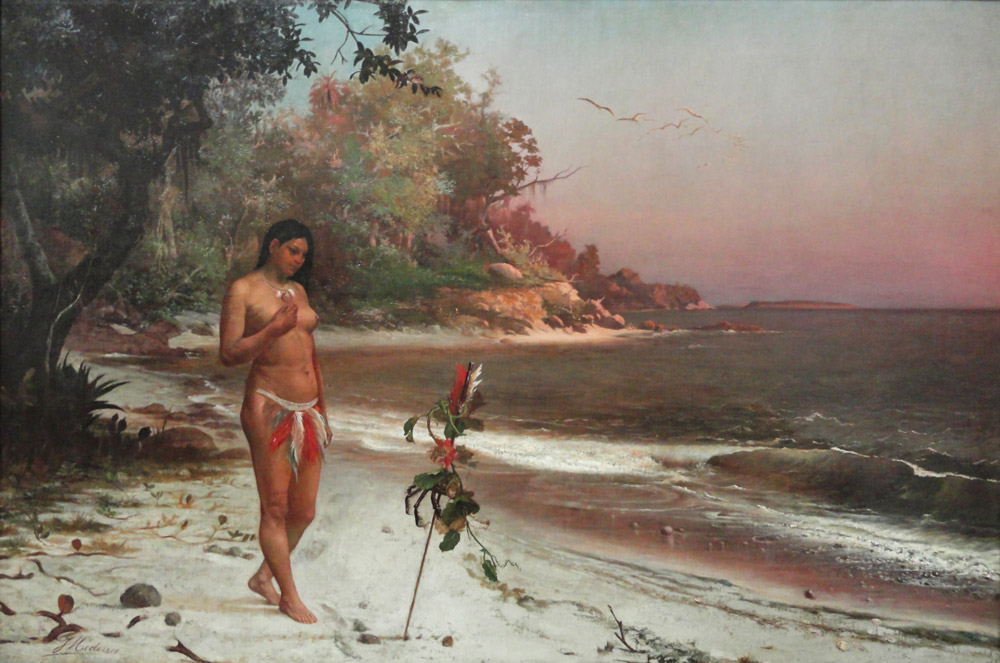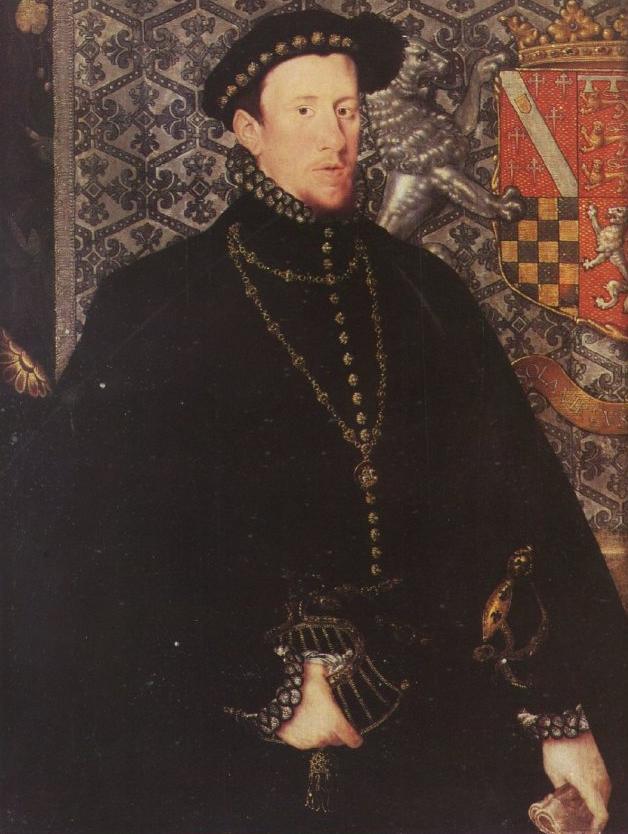Elizabeth I of England had many reasons to fear the Catholic Church and its creatures. Since her parents married while her father’s wife was still alive, her legitimacy was put into question, as well as her right to rule. Some thought her elder sister’s heir was the catholic Mary Stuart, Queen of Scots, while others advocated for the following of her father’s will, which determined the Stuarts and their descendants could never rule England. According to Henry VIII’s last desires, the throne should pass to the Grey and Suffolk families after his children and their heirs, who were English and protestants, excluding his Scottish great-niece. His intention was clearly to prevent a reunion of the Church of England with Rome, attempted by his daughter Mary during her five-year-long reign.
Although the protestants in England were happy with Elizabeth’s rule, many in Catholic Europe thought that her hold on the throne was tyrannical and illegal, exemplified by the papal bull Regnans in Excelsis issued by Pope Pius V in February 1570. In this bull, the pope excommunicated Elizabeth I, calling her the "the pretended Queen of England and the servant of crime”, while releasing her subjects from obeying her. At the same time, the Pope excommunicated anyone who obeyed her orders, declaring her a heretic.
Both Philip II of Spain and Holy Roman Emperor Maximilian II disagreed with this approach, thinking it would give cause to those persecuting Catholics at Elizabeth’s court, which happened. Although most English Catholics preferred not to plot against the Queen, some, especially wealthy landowners, rejoiced in the idea of removing Elizabeth for someone who would owe their throne to them.
This was the case of Thomas Howard, 4th Duke of Norfolk. He was a second cousin to Queen Elizabeth through her grandmother, Elizabeth Howard, and he was trusted with public offices despite his family’s historical leaning towards Roman Catholicism. Feeling undervalued by Elizabeth, he was involved in a northern rebellion in 1569 that sought to overthrow the Virgin Queen and place her cousin Mary Stuart on the throne, but begged for mercy after his imprisonment and was put under house arrest.
Thomas Howard, 4th Duke of Norfolk by Hans Eworth.
In 1571, he was compromised in the Ridolfi plot, where Elizabeth would be either assassinated or detained and Mary Stuart would ascend on the throne, while Thomas Howard’d become the de facto King of England by marrying her. Henry Stuart, Queen Mary’s second husband, had died in early 1571, and she was free to marry Thomas Howard, who by then already outlived three wives.
The plot took its name from Roberto di Ridolfo, an Italian nobleman that hatched and planned it alongside the Pope and King Philip II of Spain. As a banker, his travels throughout Europe didn’t gather much suspicion, including his meetings with the Spanish ambassador at Elizabeth’s court, Guerau de Espés. Through his work and secret meetings, he managed to convince Philip II of Spain, whose daughter Catalina would one day marry the son of Mary Stuart, and Mary Stuart herself. After the death of Lord Darnley, the Queen of Scotland declared that she would only marry again if it was for the need of the realm. As such, marrying Thomas Howard in return for the throne of England certainly seemed like an easy bargain for her.
Before the end of 1571, however, some of Elizabeth’s officials began to suspect a plot against their Queen’s life and worked to discover the traitors in England. John Hawkins gained the confidence of the Spanish ambassador, who named others conspirators while revealing the plan of landing ten thousand men in the Netherlands who were waiting to invade London to place Mary on the throne. Thomas Howard was discovered upon the finding of french gold in his possession, and the torture of his servants, who revealed his involvement.
As a result, Guerau de Espés was expelled from the country and the English involved were executed for treason, including Thomas Howard after a day-long trial. The Ridolfi plot ended before it began, straining the already bad relations between England and Spain, while completely severing the bonds between England and Scotland. Elizabeth sent money and men to the protestant lords threatening rebellion to Mary while beginning to mull over her options.
Due to her advanced age, even if she were to marry on the next morning, Elizabeth would be unable to produce a legitimate heir for her throne. With Mary as the granddaughter of King Henry VIII’s eldest sister, then it would only be a matter of time before the throne passed to another catholic, a time many might attempt to shorten by assassinating her. With Mary’s son promised to a daughter of Philip II, any attempts to follow the will of her father could lead to war against catholic Europe, a war England couldn’t hope to win.
Certainly, it was her desperation, or fear for her life, that made Elizabeth take the next step. In the spring of 1572, she summoned Edward Seymour, Lord Beauchamp of Hache to court, ostensibly so she could finally meet him. The boy, aged ten, didn’t have the easiest start in life, with his parents’ wedding happening in secret and without the consent of Elizabeth. In fact, his mother, Lady Katherine Grey, died in the Tower of London after the union was discovered after bearing two sons, and the only witness to her wedding ceremony having died before the truth came out. As such, his legitimacy couldn’t be proved and he was, by all intents and purposes, a bastard.
Elizabeth I too had a mother and father wedding in a secret ceremony which later used in a mother dying after a time spent in the tower, which might have led her to feel a sort of kinship towards Edward. Surely, she pitied him and, because of this, made him a page to her, having him serve her wine and deliver her letters. Elizabeth also supplied Edward with an education fit for a royal prince, insisting that he learn how to read and write in Latin and French, and provided for his food, accommodations, and clothes.
Lady Katherine Grey and her son, Lord Edward Beuchamp, by unknown author.
Her kindness and generosity towards the boy led to many rumors at court, with many believing that Elizabeth intended to adopt the boy, ignoring his possible bastardness, and maybe even have him adopt his great-grandmother’s name of Tudor, thereby permitting him to continue the dynasty. The ambassadors at court spread those gossips to their masters and, by the start of 1573, every ruler in Europe was aware of the growing relationship between Elizabeth and young Edward. The rumors of a possible will of Elizabeth naming Edward as her heir were regarded as true by Charles IX of France and Philip II of Spain, although there’s no veracity to this.
The feelings of the person who was affected the most by this possible succession were never put to paper. In fact, Mary Stuart never even commented about Edward Seymour possibly becoming Edward VII Tudor, as, at the time, she was more preoccupied with the Scottish civil war.
Princess Mary Margaret of Scotland by Agnolo Bronzino.
In 1571, a gossip started in the court of Edinburgh that Queen Mary I planned to betroth her two-year-old daughter, princess Mary Margaret, to the Prince of Portugal, infante João Manuel. To many protestants, this signaled the end, for with a catholic sovereign promising her two heirs to catholic superpowers, then surely it would only be a matter of time before the fires were lit.
The choice between rebellion and death was an easy one, and, on July 14, 1571, the War for the Brides was declared. The name, taken from the opposition to the marriages of the heirs, was a later creation of 1800s, while its contemporaries preferred to call it the Liberty War.
The rebels, among them John Knox and James Hepburn, were twenty-six Scottish peers, known as the confederate lords, and declared themselves freed from tyranny in the person of Mary Stuart and the catholic church. More so, they declared the Earl of Moray, Mary’s illegitimate half-brother, as King James VI.
As the two armies gathered, Mary made the decision to send her children away for their safety. Mary Margaret was smuggled to England under the disguise of Isabella Albany, daughter of a poor Scottish noble seeking proper education, where she would live under the protection of her paternal grandmother Margaret Douglas. The Duke of Rothesay, however, was put under the custody of Mary Beaton, a close friend of Mary Stuart, who had a son just two years younger than the prince.
By separating the two children, and sending one out of the country, Mary may have hoped to prevent them from being used against her. But, more importantly, she hoped to gain time to gather her strength before defeating the rebellion. In November, she sent letters to France, Spain, and the Papacy, begging for aid against the heretics who sought to usurp her throne.
She received an answer from King Philip II just before 1573 began. Help was on its way.





